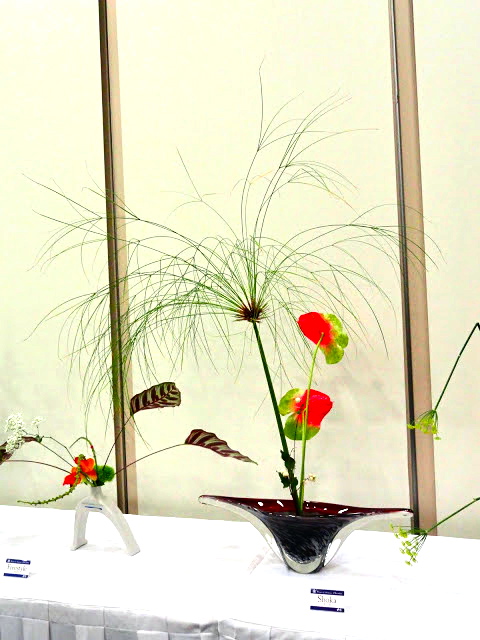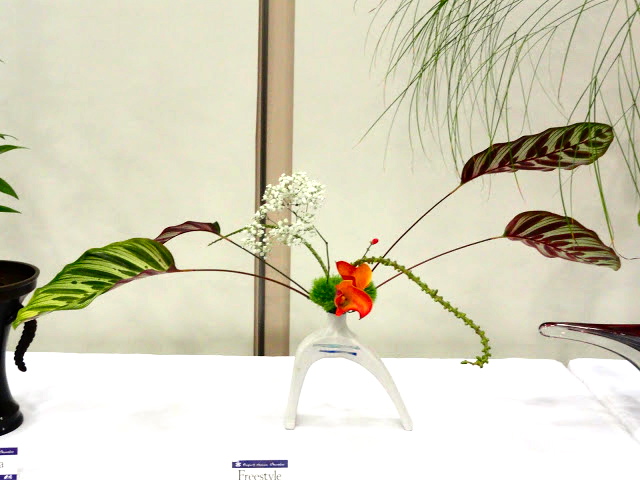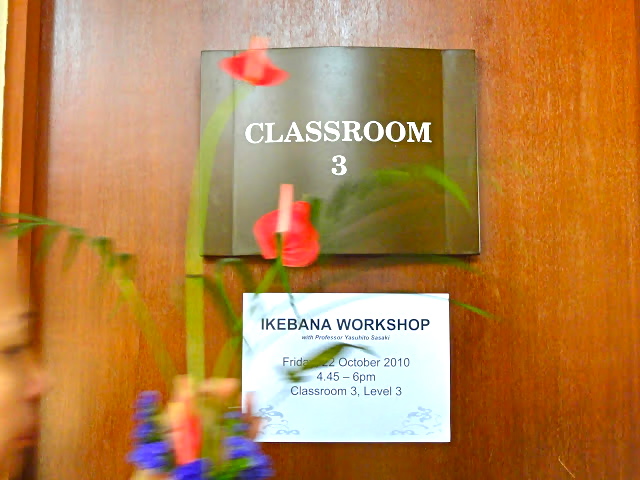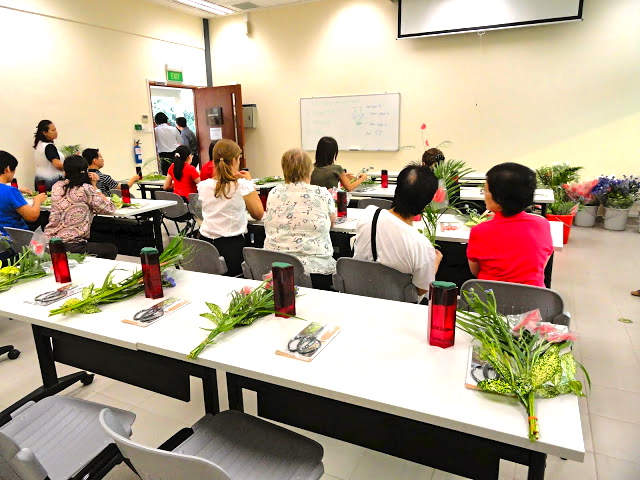I did not attend the demonstration before the workshop but managed to snap a couple of pictures of the finished pieces.
Rikka style. It's origins lies in the 16th century tatehana style and is the source of all later Ikebono styles. Arrangement consists of many contrasting but complimentary materials which expresses the beauty of the natural landscape.
Close up, in detail. A black flower?
Shoka style. It's origins lie in the 18th century form of simple ikebana and comprises of the traditional (shofutai) style and the modern (shimputai) style. Shofutai consists of three main branches, shin, soe and tai, which form a unity expressing the perpetual change and renewal in life. Shimputai consists of two main parts, shu and yo, which respond to each other with contrasting yet harmonious qualities, with a third part arashi, sometimes added as a finishing touch.
Two freestyle arrangements. This is the most recent form which emerged as a response to contemporary tastes, and may take on either a naturalistic or abstract style.
This would be my favourite piece.
After the demonstration, we proceeded to one of the classrooms for the workshop held in Classroom 3.
Look at all the plant material in those pails for our use!
It feels good being a student again.
We were each given a vase with a sponge, a pair of scissors, and a bunch of leaves and flowers.
We were told to take note of focus point, movement and space in our arrangement, and to avoid symmetry.
In 20 minutes we were done. The teacher, upon looking at my work, had no comments, but made a few minor adjustments out of obligation...lol. I think I did real bad. The boy liked it though.
It definitely takes more than a hour-long workshop to fully understand Ikebana. You might want to join the Ikebono Ikebana Society Singapore Chapter for a better appreciation of the art form. Meanwhile, I'll leave you with a decription of The Soul Of Ikebana as pulished by the Ikebono Ikebana Society.
















No comments:
Post a Comment